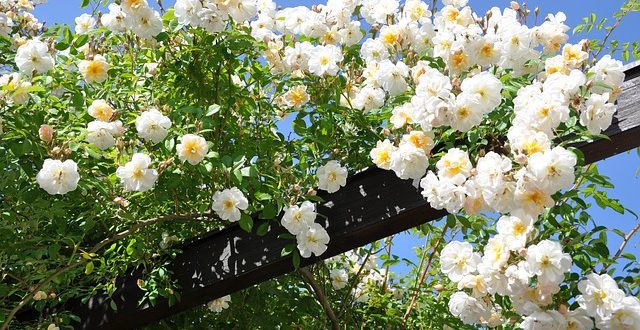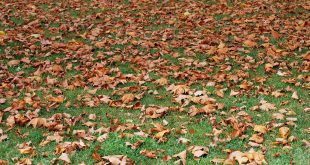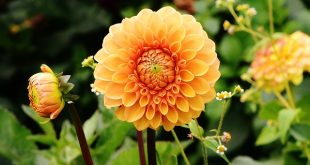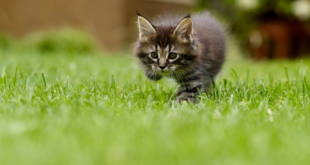There is a lot to see and a lot to do in the garden during June.
Borders
Hellebore and Euphorbias will be ready to have the old flowering stems removed. Leave Hellebore flowers if you want to harvest some seed for new sowings. Euphorbias contain a sap that is an irritant so take care when pruning.
Split Bearded Iris when they have finished flowering to ensure continued flowering in clump form. If left, all the flowering will (in time) be on the outside and a hole will appear in the centre.
Summer Chrysanthemums will need new shoots pinching out at 6 inches, continued pinching out will ensure a multitude of flowers. Deadheading, like all flowering plants will ensure flowering well into the autumn. Don’t forget to feed though, along with all the summer bedding – tomato food or any high potash feed is ideal.
Containers
Bedding plants in troughs, containers and baskets will always benefit from regular feeds. The best way is to insert food sticks or capsules. Osmocote and Phostrogen both produce a range of time-release foods of varying sizes dependant on the size of container to feed. They will last for most of the season.
Trees and Shrubs
With the wetter weather over the last few months, new and established plants will begin to show the signs of root distress. Wood and bark chippings, mushroom compost, grass clippings can all be used as mulches to retain moisture around trees and shrubs
Many shrubs that have either recently flowered or are flowering, can be successfully pruned to ensure that they flower next year. This also keeps them under control and ensures regular flowering while retaining the shape and size of the shrub. Another method to retain size is to reduce new shoots as they emerge throughout the growing period. Early flowering shrubs that have finished flowering such as Forsythia, Weigela and Deutzia will require removal of the old flowering growth to ensure it flowers next year.
Lawns
The lawns should now be looking a lot healthier after their weed and feed earlier on. Try not to water lawns too much as this can lead to problems later on, but if watering is deemed an absolute must, then early evening is best. Remember to leave at least 6 weeks between applications of weed killer, and be careful of spray drift.
Fruit
Look out for mildew on Gooseberries and be ready to spray them.
Strawberries will start to throw out runners and these are best restricted to two per plant and placed into separate pots for growing on later. Remove further runners from the plant completely. Get ready with the straw or mats for putting under the emerging fruit.
Fruit trees may begin to drop their fruits if the hot weather continues. This is nature’s way of protecting the tree, and in many cases avoids the tree from over cropping. Set codling moth traps in the tree, and as the fruits set, be prepared to remove further fruit from the cluster.
Vegetables
Try to keep watering regularly to prevent splitting or blossom end rot of tomatoes. Remove male flowers on cucumbers (flowers with no fruit behind them) – this will ensure there is no bitterness in the remaining fruits.
The new shoots on broad beans will be prime for attack by blackfly, so spray early to protect them.
Greenhouse
Greenhouses should have shading on the glass or the use of a blind inside – if not already done. Hosing down in the early morning will help to create a microclimate and reduce transpiration of the plants within the greenhouse. Inter-planting of French Marigolds within the greenhouse will help to attract hover flies that feed on whitefly.
Watering
Consider installing a micro-drip system around the garden. There are quite a few systems on the market, which are affordable. By using a timer and the outside tap, they are ideal if you are away. All manner of drip nozzles and sprayers for trees, shrubs, bedding and greenhouses are available. Most good garden centres will stock them.
Roses
Look out for mildew on Roses, spray if required. Powdery mildew is prevalent in hot weather and downy mildew when it is warm and wet. Powdery is on top of the leaf and downy, as the name implies, underneath.
Tie in climbing and rambling Roses if needed. It will also encourage them to produce flowers. A handful of proprietary rose food around the base is essential each month while flowering. Deadheading will encourage a continued development of flowers. A regular spraying of an insecticide/fungicide, which will help too. Keep mildew and black spot at bay they are likely to be rife with the ensuing weather conditions. Spray as preventing is not an option.
Weeds
Weeds, regardless of weather, always seem to thrive. Picking out weeds as you see them will always reduce the number prevalent in the garden. Ground elder and bindweed are by far the most persistent weeds to control, usually because they entwine themselves with other plants. Only Glyphosate (sold as ‘Round-up’) in various formulations will successfully control these two . One trick to help is a plastic lemonade bottle. Cut the bottom off and place over the weed and spray through the neck or conversely cover the plant and spray the weeds around it.
Another method for bindweed control is to place a long stick in amongst it and allow the bindweed to spiral up it. Then, paint the leaves with Round-up. Do not spray as the resultant spray-drift will kill surrounding plants as Round-up is non-selective and will damage plants when the solution touches the leaves. Light hoeing will ensure the annual/ephemeral weeds don’t get a chance to flower and disperse yet more weeds.
Weedkiller options
With such an array of weedkillers available, we would all like to think that one weedkiller would do everything. The most widely used are paraquat/diquat (Weedol), simazine (Pathclear), Sodium chlorate, and Glyphoshate.
Weedol is probably the most well-known having been around for years. It controls light annual and ephemeral weeds on driveways, paths and soil borders. These weeds will have a small root system. It will not kill weeds with any form of taproot such as dandelion, thistle and dock. Weedol is a purely contact weedkiller that affects anything green. It also breaks down immediately it hits the soil and becomes ineffective. It will ‘burn’ other types of weeds, but do little else.
Pathclear contains both paraquat, diquat and simazine. This is specifically, as the names suggests for using on drives and pathways. It creates a lacquer over the ground to burn the tips of emerging weeds and therefore thwarts their establishment. It also has a slightly wider range of controlled weeds due to the simazine.
Glyphosate works differently in the fact that it travels within the weed to destroy the root system of the weed. It is ideal for deep-rooted weeds like nettles, ground elder and couch grass. In after re-emergence of weeds from established root systems after applying a contact weedkiller. This also breaks down on contact with the soil. It kills annual and perennial weeds. Because of cost, only use on problem areas and not as a general do-it all weedkiller.
Sodium Chlorate is a kill-anything type of weedkiller. After treatment, nothing grows because of the high levels of salt in the soil. This can be seen next to roads that have road salt applied to them. The resulting spray from the rain creates high acid levels in the surround soil causing everything to die. The problem apart from ‘Killing the soil’ for up to 6 months, is that it creeps through the ground. It will follow the natural slope of the land and slowly (although in a diluted form) filter through into other areas, killing anything in its path. Its travel is usually dependant on the slope of the ground and to some degree the amount of rain. Small amounts of rain will help it move as it goes back into solution, whilst the other extreme of torrential rain with help to leach the chemical through the soil.
Fortunately, modern day weedkillers when applied correctly can assist in good husbandry around the garden. Reduce usage by choosing the right weedkiller for the right job.
 Gardeners Club The Gardeners Club is a free to join online club for everyone with an interest in gardening and gardens.
Gardeners Club The Gardeners Club is a free to join online club for everyone with an interest in gardening and gardens.






